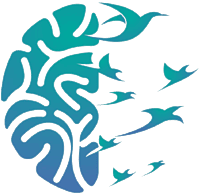Comparison of Somatic Methods
Comparison of Somatic Methods

The Future of Emotional Wellness
Somatic release offers renewed hope to people burdened by trauma and emotional overwhelm.
By harnessing the intricate connection between body and mind, somatic approaches provide profound healing experiences. In this post, we'll explore seven distinct somatic methods, each with unique tools to navigate the complexities of human emotions and physiological responses. We'll begin with a touching story that exemplifies the transformative potential of these therapies.
Let's begin with John, a veteran, who has struggled daily with the debilitating effects of PTSD for the past 8 years. Traditional treatments did little to ease his vivid flashbacks, labile mood, and night terrors. It wasn't until he discovered SLIP™ Resilience Coaching that he felt a shift. "Each session helped me understand how to release trapped emotions and release them bit by bit," says John. "I didn't just find relief; I found a path back to my stronger, more connected self."
SLIP™ Resilience Coaching
Developed by Mignon Walker MD, SLIP™ Resilience Coaching is an advanced somatic method that focuses on building resilience through trauma-informed somatic processing that targets the core beliefs at the heart of self-sabotage. SLIP™ Resilience Coaching uses peak performance flow states to accelerate the focused, results driven online sessions like John's.
Somatic Experiencing (SE)
Developed by Peter Levine, this body-focused method aims to relieve symptoms of PTSD and other traumas by releasing pent-up energy held in the body at the time of trauma. It gradually restores the body's natural ability to regulate stress. It may involve touch.
Accelerated Experiential Dynamic Psychotherapy (AEDP)
Diana Fosha's approach combines psychodynamic theories with experiential techniques, including somatic awareness. AEDP transforms emotional suffering through a deeply affirming therapeutic relationship.
Sensorimotor Psychotherapy
Pat Ogden’s method integrates sensorimotor processing with psychotherapy to address trauma and attachment issues.
It focuses on the body's responses, using mindfulness to alter habitual reactions to stress. This approach teaches the body new, healthier responses to old triggers.
Hakomi Method
Founded by Ron Kurtz, Hakomi embodies the principles of mindfulness and nonviolence, rooted in both Western psychology and Eastern philosophy. This method accesses deeply held emotional truths through bodily awareness.
Eye Movement Desensitization and Reprocessing (EMDR)
Developed by Francine Shapiro, EMDR facilitates the processing of traumatic memories with directed eye movements. This technique is limited by a client's ability to remain focused and not dissociate.
Gestalt Therapy
Created by Fritz Perls and others, Gestalt Therapy encourages clients to live fully in the present and to become aware of their immediate thoughts, feelings, and actions. It utilizes experiential exercises like role-play to enhance self-awareness and personal responsibility.
Understanding the Differences
Each of these methods addresses trauma, but they do so from different angles:
Focus on Trauma: SLIP™ Resilience Coaching, SE and Sensorimotor Psychotherapy delve deeply into processing subconscious physical sensations, while EMDR addresses trauma through sensory input and memory.
Role of Mindfulness: While Hakomi centers on mindfulness as a primary tool, other methods like SLIP™ Resilience Coaching, SE and Sensorimotor incorporate it in relation to bodily awareness.
Therapeutic Relationship: The connection between therapist and client is paramount in SLIP™ Resilience Coaching and AEDP, enhancing emotional healing.
Techniques Used: EMDR utilizes eye movements; Gestalt engages in role-play, contrasting with the inward focus of Hakomi.
Peak Performance & Resilience Building: SLIP™ Resilience Coaching combines the transformative potential of somatic processing with the neuroscience of peak performance states and resilience building to resolve the maladaptive core belief wounds at the heart of self-sabotage.
Each method offers a pathway to healing, tailored to the needs of different individuals, especially those for whom conventional therapies have fallen short.
If you or someone you know is navigating the challenges of trauma recovery, exploring these somatic therapies could open the door to profound healing and newfound resilience. Reach out to a somatic practitioner to discover which method might best unlock your or your loved one’s path to recovery.

